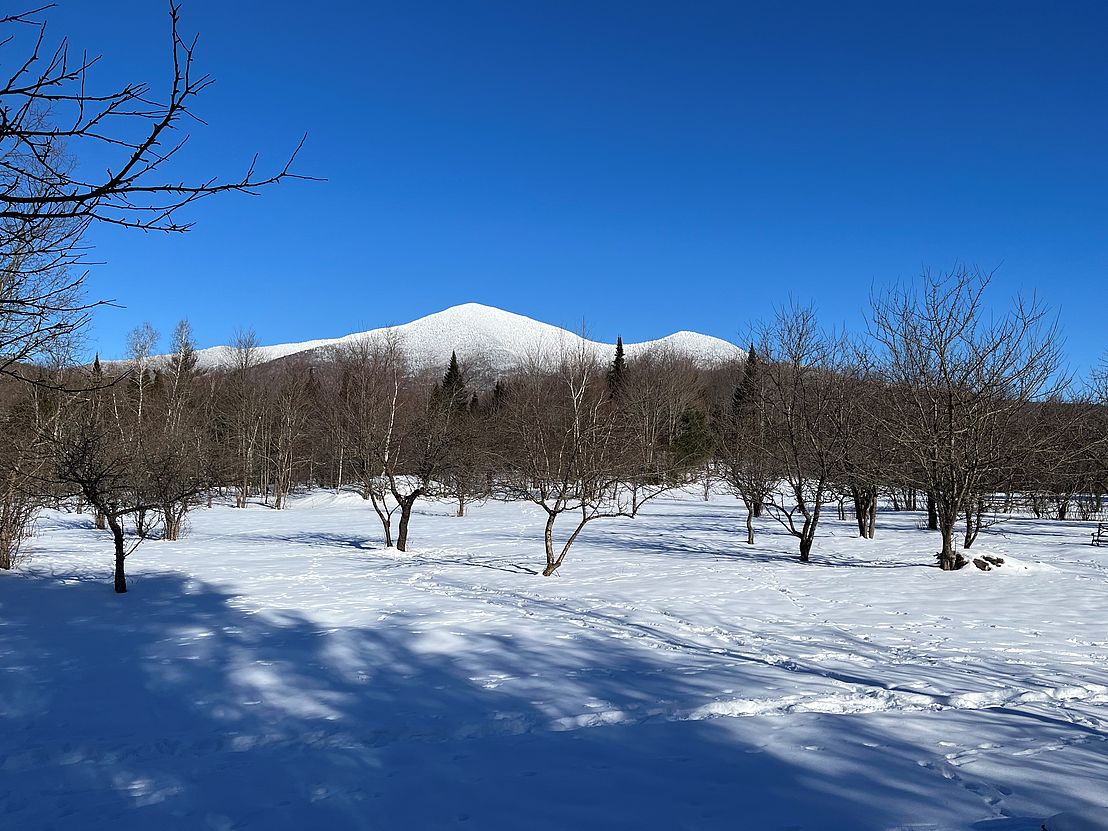Why Act 250 Is About More Than Just Housing
Greetings friends, and welcome to the Winter 2024 Edition of CONNECTIONS, the Quarterly newsletter from Cold Hollow to Canada.
We’re almost halfway through the legislative session this year and unless you’ve been hiding somewhere in the newly created Bears Nest Wilderness area (more on that elsewhere in this edition!) you’ve likely heard that this is the year we finally fix Act 250 (or at least that this is best chance we’ve had at reform in decades). I’d like to take a few minutes to talk about why communities in the Cold Hollow to Canada region should care about this. Bear with me—Act 250 is usually one of those things that causes the eyes to cross and the mind to wander, but this is really (really) important, especially if you care about our forests and the communities that depend on them.
When it comes to Act 250, most of the conversations in the media right now are about housing, and how we can change Act 250 to stimulate greater housing development (especially affordable and workforce housing) given the critical deficit we’re facing in Vermont. This focus is entirely merited, as changes to Act 250 such as the proposed exemptions in our designated growth areas (our Downtowns and Village Centers) would go a long way to greasing the skids in getting roofs over heads, however there are also changes to Act 250 which could have a big impact on those areas outside of our growth centers. So, as we look at what types of housing we’d like to encourage, it’s equally as important to consider what we don’t want housing development to look like on our landscape.
Much of how Act 250 works can be boiled down to something called the “10-5-5” rule. This states that if a developer creates more than 10 units of housing—or a property owner subdivides a parcel into more than 10 lots—within 5 miles of each other, and within 5 years, the project is brought under Act 250 jurisdiction. Once under jurisdiction, the project must address ten different criteria which consider everything from traffic and the impacts on schools, to the loss of agricultural soils and effects on air quality. If you don’t trigger jurisdiction (that 10-5-5 rule) none of the criteria come into play, and the project is only subject to local zoning regulations (which across the state vary drastically in coverage and depth).
Still with me? Great. Now, let’s look at an example of how this may play out right here in our own community of Montgomery: There’s a 190-acre property on Rt. 242 which is situated within one of the
highest ranked forest blocks in our region for ecological importance. The parcel is also in one of the highest priority connectivity linkages in our area for wildlife, and provides headwaters and flood storage for the Trout River. The parcel was purchased back in the early 2000s and an extensive road system was developed to serve what would eventually become fifteen 12-acre lots. Now, those of you paying
attention are probably saying “wait, fifteen lots is more than ten, so this project should have gone through Act 250 review, right?”. Great point reader, but even though development such as this was intended to be subject to review, the structure of the 10-5-5 rule allowed the subdivisions to occur in a manner where they were phased so that no more than seven or eight lots were created in a five-year period, and the balance carved out after the clock was re-set. This allowed the development to essentially leap-frog jurisdiction. So, now we have a road system of over 3,500 ft (or about .6 mi) and a fragmented landscape which stands to lose both the ecological and working forest values that—as a community, and as detailed in our Town Plan—we’ve expressed a desire to protect. This is just one example of how Act 250 currently fails to address the rapidly increasing fragmentation and forest loss that we are seeing in our state as a result of some forms of housing development. But don’t despair! We have a solution.

As part of a compromise framework advanced in a recent Natural Resource Board report, Vermont has the opportunity to include something called a “Road Rule” in the reform package to be advanced, and with it new review criteria which would address the fragmentation of our forests. The proposed road rule would create a jurisdictional trigger which says that if development creates a road which is greater than 2000’ in length (or the combined length of roads and driveways is greater than 2000’ in length) the project would be brought under Act 250 jurisdiction, and newly created forest fragmentation criteria would apply. A rule such as this would have brought the project we just reviewed here in Montgomery under jurisdiction. To be clear, this would not stop development in these areas completely (nor is that the intent), but it would allow for some level of project review to address the resource concerns which are so near and dear to those of us that call these forests landscapes home, and who depend on the multitude of benefits these intact forests provide. The rule would provide for an opportunity to consider alternatives like more clustered development or layout which might mitigate impacts to sensitive habitats or forest hydrology. This is a level of review which today is sorely lacking. Again, the intent isn’t to stop development, but to ensure that development is planned properly. As it stands today, over 90% of projects which are brought under jurisdiction are granted a permit.
Here's another opportunity—the developer of that project in Montgomery we just looked at never actually sold any of the fifteen lots that were developed on site, and the parcel is now on the market. So, if you or any of your friends have something like the asking price of $1.8M laying around, we’d love to find a conservation buyer to help us ensure that this land stays part of our working forest heritage for the generations to come after us, and central to the intact landscape which provides a crossroads for wildlife within this greater Northern Forest we call home.
So, call your representative or shoot your state senator an e-mail and ask them to ensure that the road rule and new criteria to address forest fragmentation are included in any package to advance to the Governor’s desk this year. We need housing, but we also need to ensure that the forests rural communities like ours depend on—the forests that define the landscape of Vermont—remain intact and functional.



Photo credits:
-Aerial drone images of 242 Subdivision Lot from the Gardner Group, RE/MAX North Professionals; "Lot Development in Montgomery"
-Everett McGinley "Field view of Big Jay"
-"Sparrow" photographer unknown, owned by CHC
-"Snowshoe Hare" by Jessica Boone
-"Skunk In Winter" by Chris Mazarella



